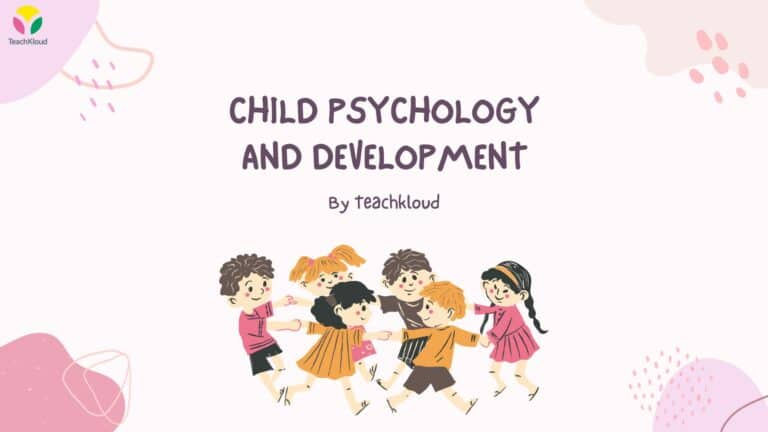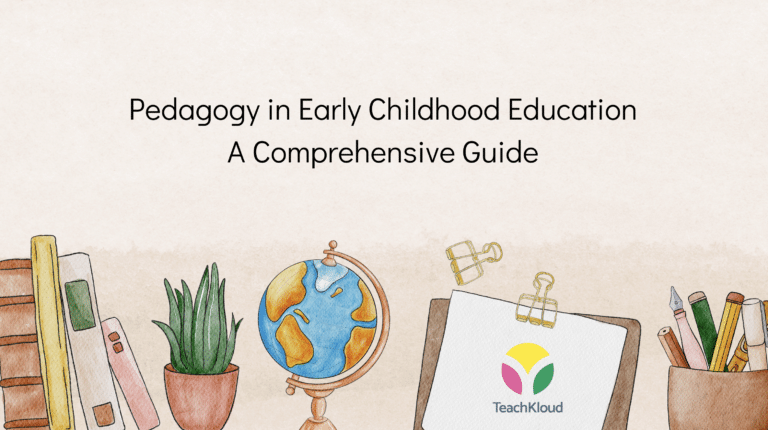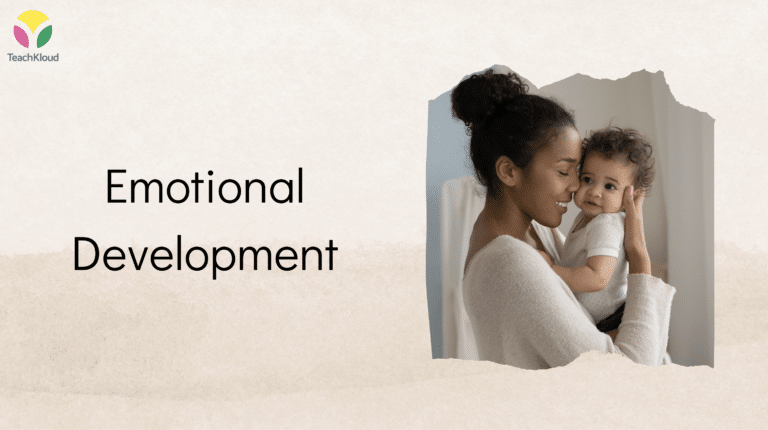The Importance of Early Literacy
Early literacy is more than just being able to read; it’s a multifaceted skill that sets the foundation for a child’s overall academic and personal development. When children are introduced to literacy concepts from a young age, they stand to gain advantages that extend well beyond knowing alphabets and simple words.
In the early years, children’s brains are like sponges, ready to absorb every bit of information and learning. By incorporating literacy activities in their daily routine, you can offer a multitude of cognitive, social, and emotional benefits. Let’s delve into the reasons why early literacy is truly indispensable.
Cognitive Development
Learning to read and write helps in the development of a child’s cognitive abilities. They start understanding the concept of words, their meanings, and how they can be combined to form sentences, aiding in their thinking, problem-solving, and analytical abilities.
Enhanced Communication
When children interact with texts, they learn new words, their usage, and how to express themselves effectively. This leads to increased vocabulary and improved language skills, enhancing their overall communication ability.
Social and Emotional Development
Exploring the world of literature, children are introduced to different emotions, social cues, and scenarios that they might not have encountered otherwise. This broadens their perspective, increasing their empathy, understanding, and emotional intelligence.
Understanding the Developmental Stages of Literacy
Understanding the developmental stages of literacy is absolutely essential when teaching early childhood. You’ll be most effective in promoting literacy when you grasp the sequential stages children typically pass through in their literacy development. Remember that every child is unique and develops at their own pace, based on several external/internal factors. The below ar approximates. If you are concerned about a child’s development, please see professional advice.
Pre-Literacy Stage (Birth to Age 3)
At this stage, children are learning basic forms of communication, building their vocabulary, and starting to understand some fundamentals of books like holding a book or turning pages. At this stage, children start to link the sounds they hear with the words they see.
Emergent Literacy (Ages 3 to 4)
This is where children begin recognising letters and start writing them. They’re in the process of learning that letters and words hold meaning and that print runs from left to right, top to bottom. p> 3Early
During this critical stage, children start to make connections between what they hear and what they see. They begin associating sounds with written words and may start recognising some common words.
Transitional Literacy (Ages 5 to 6)
Here, children start experimenting with reading and writing. They might create and recite simple poems, write a few words or short sentences and read simple texts with a sense of comprehension.
Experienced Reader (Ages 6 and Beyond)
Children should now be able to read independently, comprehend and interpret the text, and express ideas in writing in a cohesive, logical manner.
By recognizing these stages of literacy development, you can tailor your teaching strategies to meet each child at their individual level of understanding. Each stage provides unique opportunities for you to help children to make new connections, acquire new skills and gain greater confidence in their Language abilities.
Creating a Language-Rich Environment
As an early childhood teacher, creating a language-rich environment for your students is one of the surest and most effective ways to promote early literacy. This involves more than merely exposing children to words; it entails creating a setting that encourages language use, comprehension, and interaction. The aim is to foster a love for language in a variety of forms and contexts, making it both an interactive and an integral part of children’s daily experiences.
So how do you create such an environment?
Start by fostering a ‘print-rich’ environment within the classroom. This means ensuring that readable materials like books, posters, and labels are visible and accessible, creating a constant mode of interaction with words and symbols.
Remember, the purpose of a print-rich environment is not only to expose children to print but to also spark curiosity and encourage a personal connection with these prints.
Beyond this, it’s vital to weave language and conversational opportunities throughout their entire day. This could include talking through activities, encouraging children to express their thoughts and feelings, or using storytime as a way to explore new vocabulary and concepts. Here are video ideas on how to do this in practice using loose parts.
Incorporating Phonics Instruction
Teaching phonics is a crucial aspect of fostering literacy in early childhood education. Phonics refers to the relationship between letters and their corresponding sounds, an essential element in learning to read and write. Here are two brief strategies that can be implemented, remember that children learn through play, so rote learning is usually discouraged in early childhood education and care:
1. Use Multi-sensory Approaches
Children learn best when they can engage multiple senses. Therefore, aim to include activities that utilise sound, vision, and touch. For example, letter manipulation with alphabet blocks or sandpaper letters appeals to touch while flashcards with pictures can be used to stimulate vision. This approach helps cater to different learning styles amongst children, making phonics instruction more effective.
2. Incorporate Games and Play-based Phonics Activities
Incorporating games like ‘I Spy’, ‘Phonic Bingo’, or ‘Sound Box’ not only makes phonics learning fun but also allows children to practise their phonological awareness skills. These activities often encourage children to listen for sounds, identify letters, and blend sounds, all without realising that they are learning.
Fostering a Love for Reading
Instilling a love for reading from an early age can be one of the most valuable gifts you can give your students. This fondness for books and stories can be the cornerstone for a lifelong love of learning, encouraging curiosity, and fostering a sense of empathy and understanding.
Here’s how you can create an environment that inspires a love for reading:
Create a Cozy Reading Corner
Designate a particular spot in your classroom that is solely for reading. It should be a comfortable, inviting space filled with a variety of books suitable for their age and reading abilities. The idea is to create an environment where children feel relaxed and are more encouraged to pick up a book and read.
Read Aloud and Interactive Storytimes
Reading aloud to children not only helps to develop their vocabulary and comprehension skills but also shows them the joy that reading can bring. From the suspense of a thrilling plot to the laughter from a humorous character, displaying your enthusiasm during interactive storytimes can pique the children’s interest in reading.
Provide a Diverse Selection of Books
Ensure that your classroom library offers a broad range of materials to cater to varying interests, cultures, and languages. This could include picture books, informational texts, poetry, graphic novels, and multicultural literature. A diverse library broadens a child’s knowledge base and enables them to see themselves in the stories they read.
Incorporate Reading in Daily Routine
Find ways to integrate reading into their daily activities. It could be as simple as storytime before nap time or assigning a ‘book of the week’ that relates to the current topic they’re learning. This sends a clear message that reading is part of everyday life and is not just confined to a specific ‘reading time’.
By fostering a love for reading, you’re not just advancing their literacy skills but also planting a seed that will inspire these young learners to become independent thinkers, lifelong learners, and empathetic global citizens.
Using Play-Based Activities to Promote Literacy: Loose Parts
Play-based activities, particularly those involving ‘loose parts’, can be a powerful tool in your literacy teaching arsenal. The concept of ‘loose parts’ play is centred on providing children with materials that can be moved, manipulated, controlled, and changed while they engage in exploratory, creative play. These can range from natural materials, such as stones, shells, or pinecones, to man-made items like buttons, blocks, or fabric. But how can this approach be used to promote literacy? Let’s explore that.
Building Vocabulary
As children engage with loose parts during their play, they’re also building their language skills. They name objects, describe their actions, and engage in conversation with peers and educators. You can encourage this by introducing new vocabulary, whether it’s the names of the materials themselves or adjectives to describe their different attributes such as texture, size, or colour.
Storytelling and Sequencing
‘Loose parts’ play also offers wonderful opportunities for storytelling and sequencing, both important precursors to literacy. Children can use these parts to create and narrate their own stories, setting the scene, developing characters, and sequencing events. You, as an educator, can scaffold this by initiating storylines, asking probing questions, and pointing out sequences and patterns. Pay attention to the narratives children are developing and extend their thinking with thoughtful questions and suggestions.
Symbolic Thinking
Engaging with ‘loose parts’ supports the development of symbolic thinking – a vital skill for early literacy. When children use a stone to represent a cake or a stick as a person, they’re demonstrating their ability to use one thing to represent another. This is fundamentally what reading and writing is about – symbols (letters and words) representing ideas and meanings.
Following Directions and Prepositions
Instructions are often an integral part of play with loose parts. This can be a natural setting for children to learn about following directions and understanding prepositions. For instance, you might ask a child to “put the red block under the blue one” or “move the feather behind the stone”. These interactions enhance listening comprehension and language skills, providing a foundation for future literacy development. It can be incorporated into a game or playful learning experience. See more on using loose parts by watching our video series here.
Using loose parts to promote literacy in early childhood environments does require some preparation and imagination from the teacher’s side. However, the dynamism and creativity that comes through this form of play can bring language and literacy skills alive in a manner that more traditional teaching methods might fail to do. Remember, that playful learning experiences, regarding literacy, can be further enriched through conversation.
Developing Oral Language Skills through Conversation
Developing oral language skills in early childhood has a profound impact on a child’s literacy. As a teacher, you play a pivotal role in nurturing and cultivating these skills. Conversation forms the backbone of this development, serving as the bedrock of language proficiency, spawning both comprehension and expression.
The Power of Conversation
Inviting children to converse allows them to unfold their narratives, ask questions, share their reflections and gradually construct their understanding of the world. With time, their vocabulary deepens, syntax improves and they start dabbling with complex sentence structures that boosts their confidence and shapes their personality.
Facilitating Rich Conversation
Creating conversational opportunities goes beyond casual chit-chat. It necessitates a deliberated environment that fosters rich discussion and inquiry-driven dialogue. Pause to invite responses, employ open-ended questions, echo their words and indulge in parallel talk. The key lies in making the conversation interactive and engaging. Genuine interactions help them express views, make them feel heard and recognised, thereby nurturing self-esteem and social skills.
Integrating Conversation Throughout the Day
Integrating conversation in everyday routines and activities forms an essential part of oral language development. Brief yet productive talks during meal times, play, story-time, or transitions can prove incredibly effective. These interactions lend context, making learning experiential, and helping children correlate abstract language rules with real-life situations.
Incorporating Language Games
Language games work wonders in developing a child’s oral language skills. Rhyme games, puppet play, role-playing, story-chaining, are excellent ways of encouraging dialogue. These fun-filled activities make children comfortable using language while also enhancing their vocabulary and comprehension.
Encouraging Independent Speech
A conducive environment that respects children’s ideas and encourages them to express freely cultivates independent speech. Providing adequate time for children to articulate thoughts and respecting their conversational pace may bring about major strides in their language development.
In a nutshell, regular, thoughtful conversation is a powerful tool in enhancing a child’s oral language proficiency. As they explore the vast potential of language through conversation, children unveil layers of cognition, social-emotional competencies and narrative skills, laying a robust groundwork for their literacy journey. Some say that music is the language of the world, using music and rhymes can support early literacy, read on to find out how.
The Role of Music and Rhymes in Early Literacy
Music and rhymes play a significant role in promoting early literacy, and as an early childhood teacher, you’re ideally placed to harness these powerful tools. But how, you may ask, does music foster literacy? And, importantly, how can you incorporate it into the classroom effectively?
The Connection between Music, Rhymes and Literacy
Music and rhymes offer an engaging way to introduce children to the rhythm and tones of spoken language. Much like language, music is a form of communication that includes rhythm, pitch and syntax. When children engage with music and rhymes, they are essentially practising these same skills that form the foundation of reading and language acquisition.
Nursery rhymes are particularly effective in this aspect. They introduce young learners to a world of words, combining rhythm, melody, and language to stimulate children’s auditory perception and linguistic skills. They encourage children to play with the sounds and rhythms of language, enhancing their phonemic awareness.
Integrating Music and Rhymes into Language Learning
You can incorporate music and rhymes into your early learning environment in numerous ways. Here are some strategies: Firstly, use songs and rhymes during transition times, such as while cleaning up or moving from one activity to another. Having a specific song for each transition helps signal to children what is expected next. In addition, remember to use songs and rhymes to teach new concepts; a catchy tune can help children remember key academic content. Also, play instruments and tap out rhythms to support children’s phonological awareness and sound discrimination. Encourage children to create their own songs and rhymes, which fosters creativity while reinforcing language skills. Lastly, hold regular ‘music and movement’ sessions that incorporate songs, dances, and rhymes to promote literacy in a fun, energetic way. This works for all learners but remember that all experiences should be tailored to the child, you may need to support children with different background and abilities, such as dual language learners.
Supporting Dual Language Learners in Literacy
Supporting dual language learners in literacy can present a unique set of challenges, but with the right approach, you can turn these into opportunities for growth and discovery. Dual language learners (DLLs) bring with them a rich cultural heritage and a unique perspective that can greatly enrich the learning environment.
Embrace their Bilingualism
It’s important not to view a child’s bilingualism as an obstacle to literacy, but rather as a strength. Encourage them to use both languages in the classroom and incorporate dual-language resources when possible. This validates their language competence and makes them feel valued and included.
Use Visual Aids
Visual aids are particularly beneficial for DLLs as they provide context and help clarify meaning. Label items in the classroom in both languages to help children link objects to words, facilitate comprehension, and promote vocabulary acquisition.
Encourage Peer Interaction
Encourage social interaction among children. As children play and communicate together, they not only develop their social skills but also their language skills. Peer modelling is a great strategy for language development.
Take a Multisensory Approach
Engage all the senses in the language learning process. Use tactile activities, movement, visual aids, and auditory input to reinforce language learning. This caters to different learning styles and encourages active participation.
Collaborate with Parents
Maintain open communication with the parents of DLLs. They are the primary source of information about a child’s language development and cultural background. Parents can offer insight into a child’s strengths, challenges, preferences, and the literacy practices at home.
In conclusion, supporting dual language learners in literacy requires a responsive, inclusive, and proactive approach. You, as their teacher, play a crucial role in facilitating their language development and fostering an engaging, inclusive learning environment that embraces and celebrates diversity. Check out this simple tool that enables you to share information with parents, increase two-way communication, manage sending and receiving signed documents, child registration and much more here!
Conclusion
As early childhood teachers, you’re in a uniquely privileged position to shape young minds and instil a love for literacy that lasts a lifetime. This exploration of early literacy has highlighted key aspects such as its importance in cognitive, communicative, and socio-emotional development. We’ve delved into various developmental stages, understanding the unique characteristics and expectations of each.
Creating language-rich environments, incorporating phonics instruction, and fostering a love for reading are integral parts of promoting early literacy. Tactics such as multi-sensory approaches, play-based activities, and engaging reading corners can be invaluable. Don’t overlook the usefulness of everyday routines in helping children familiarise themselves with reading and language use.
Interaction and conversational development play pivotal roles, as do music and rhymes. For children learning more than one language, it’s crucial to support and capitalise on their bilingual capabilities, using multisensory methods and leaning on parental collaboration to enhance their literacy journey.
Remember, you’re not only teaching children about language and literacy. More importantly, you’re fostering a deep-seated love for learning that could stay with them for the rest of their lives. It’s a challenging responsibility, but also a rewarding one. Whilst the journey to literacy may start small, with single letters and simple sentences, it opens up a world of possibilities for every child.
Keep experimenting, adapting, and finding joy in each child’s unique progress. No single method works for all, but with the tools discussed, you’re equipped to make a significant difference in the literacy learning experiences of the children entrusted to your caring hands. If you want more practical strategies with actual learning opportunities shown from start to finish, in video format, with a teacher and child, watch our video series here!




